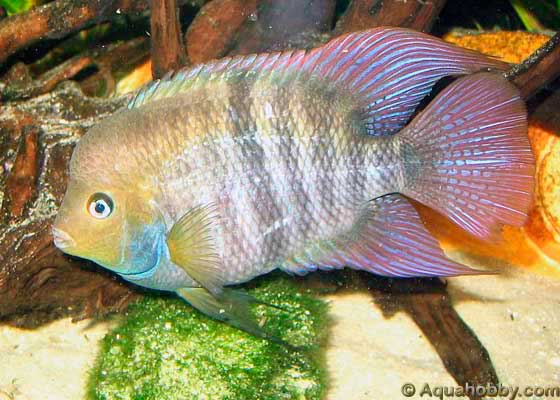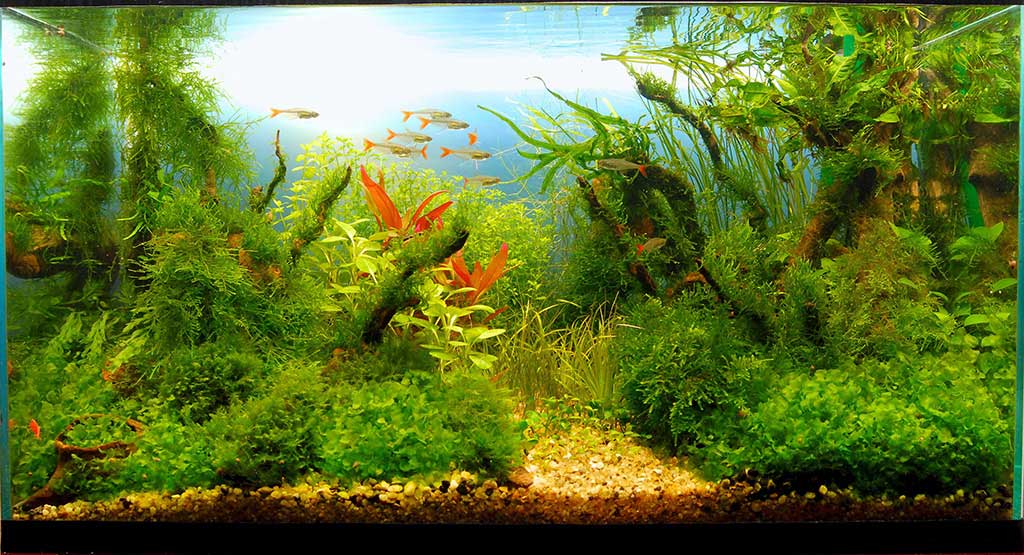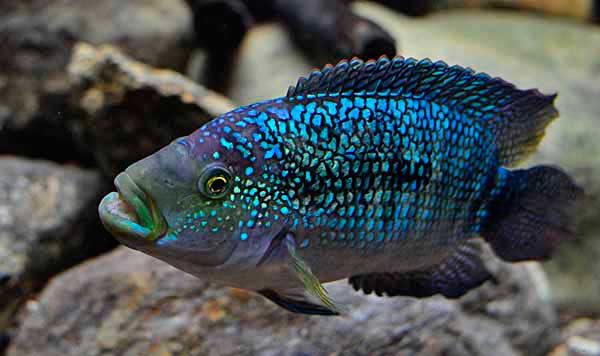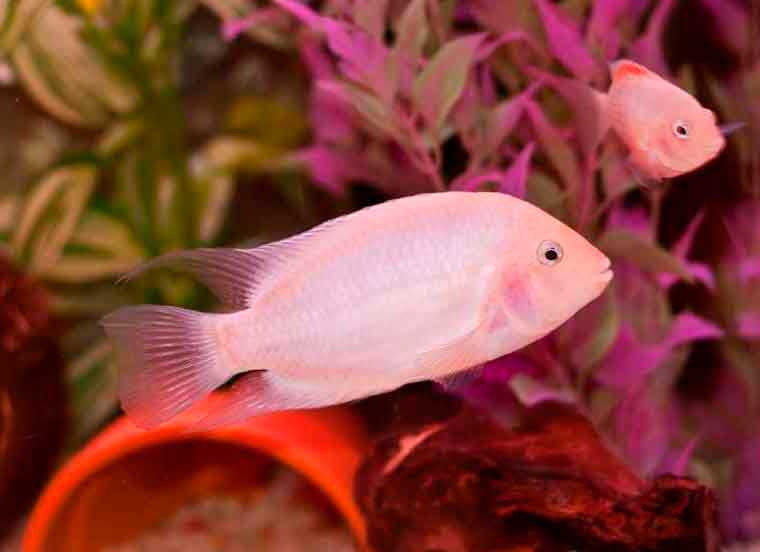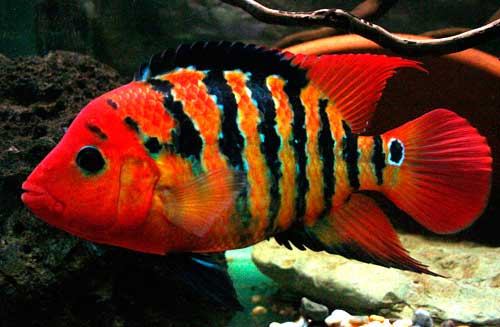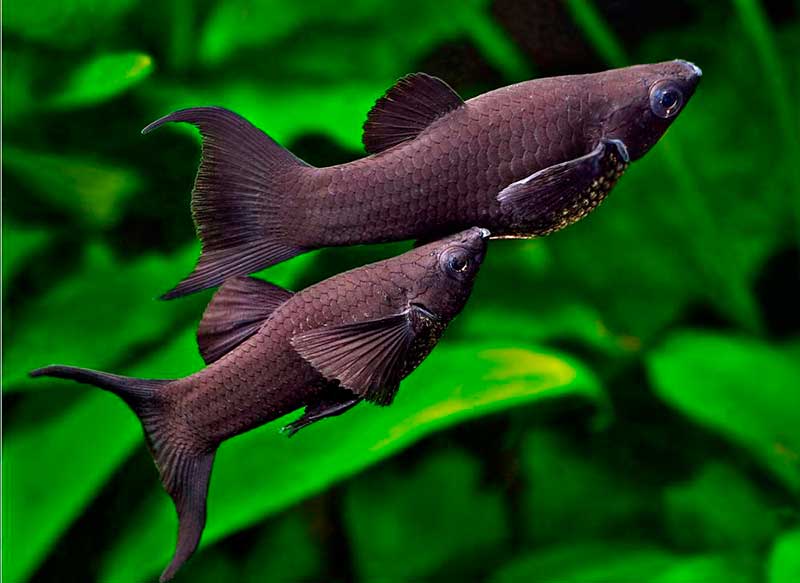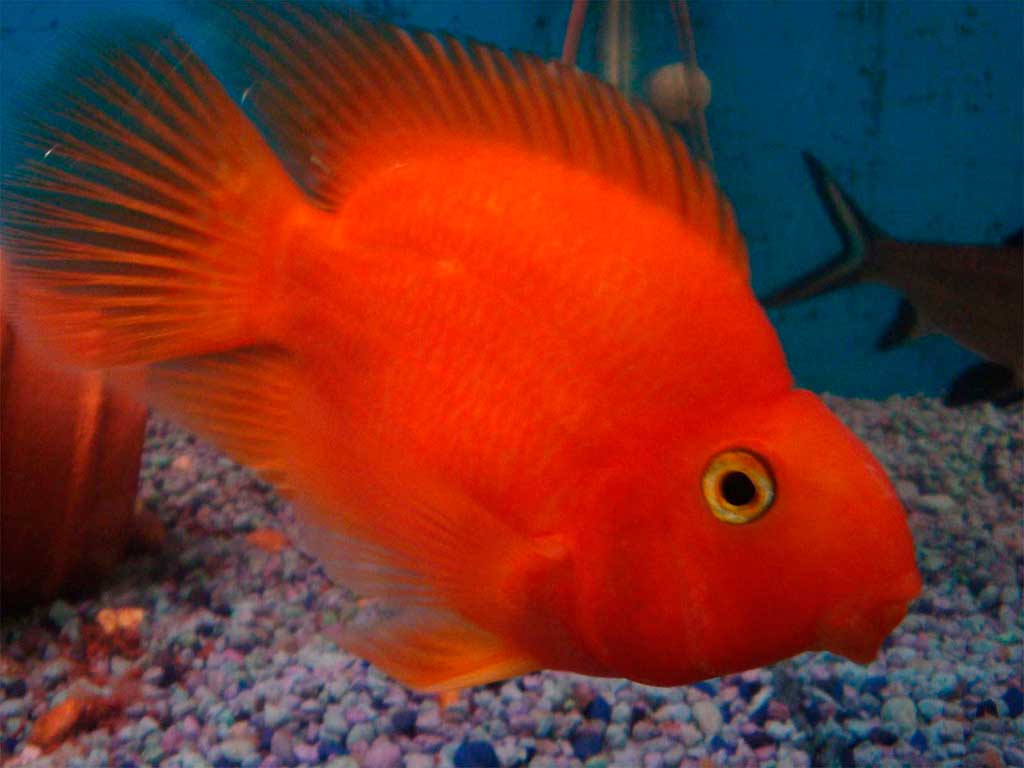Cichlasoma Sedgica has been known to aquarists around the world for many years. Despite this, its popularity among fans of home underwater worlds is not only not decreasing, but on the contrary is increasing. This is facilitated by the relatively small size of the fish, which makes it easy to create suitable conditions for them even in most modern limited-size apartments. These intellectuals have a relatively peaceful disposition, beautiful coloring, loyal attitude to plants. All this makes C. sedgica worthy of your attention.
| kingdom | Animals |
| type | Chordates |
| class | Radial fish |
| division | Perch |
| Family | Cichlids |
| genus | Cichlasoma |
| species | Archocentrus sajica |
Pink-finned or wine-finned cichlid, Cryptoheros sajica, Cichlasoma sajica, T-Bar cichlid, Archocentrus sajica.
Cichlasoma Sedgica Habitat
The home of C. sedgica is the calm, shallow waters of small tributaries of rivers in Costa Rica and Panama, which have many natural shelters. The habitat of this species is Central America from northwest Colombia to southern Costa Rica.
Cichlasoma Sedgica Description
In the wild, C. sejica reaches a size of about 12-14 centimeters. Sedgica reaches a size of about 12-14 centimeters. Behind the glass aquariums are usually smaller, the length of their body rarely exceeds 8-10 centimeters. The body is tall oblong flattened from the sides. It is colored gray-bluish color with a turquoise tint. There are transverse stripes on the body. The brightest of them is located approximately in the center. It forms with the line of the back a kind of letter “T” for what the species was named T-Bar Cichlid. The other stripes are much weaker.
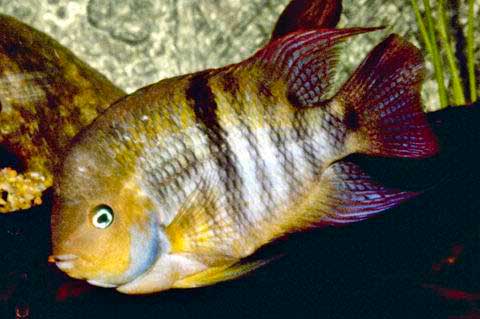
Dorsal and anal fins extend to the base of the caudal fin. In adults, their ends are stretched, acquiring the appearance of a kind of plaits. Pair of pectoral, as well as the caudal fin have a delicate pink color, due to which the fish received another of its common name – vinnoplavnichnaya or rosovoplavnichnaya. Sexual maturity is reached by 8 – 12 months. Fish sharply territorial, facultatively monogamous. Pairs are formed as they reach sexual maturity
Gender differences
The larger male has, like most cichlids, a frontal fat tubercle. During spawning, the fish have anal tubercles. In the male, it is pointed, directed toward the tail. In the female, this tubercle is rounded.
Cichlasoma Sedgica care and maintenance in the aquarium
This species is not difficult to maintain. To the peculiarities of care can be attributed to the mandatory weekly replacement of 25% of water with fresh, tempered. A varied and balanced diet is also necessary.
A nice feature can be considered that Ts. Sejica can be satisfied with a relatively small artificial reservoir. A fifty-liter aquarium will be quite enough for one pair of fish. However, when kept in a common pond, its volume should be more than one hundred and fifty liters, but even with large volumes, it is not worth overpopulating it. Cichlazoma Sedgica, like all cichlids, fish territorial and will bravely defend its favorite place from any encroachment, even if the aggressor is two to three times its size.
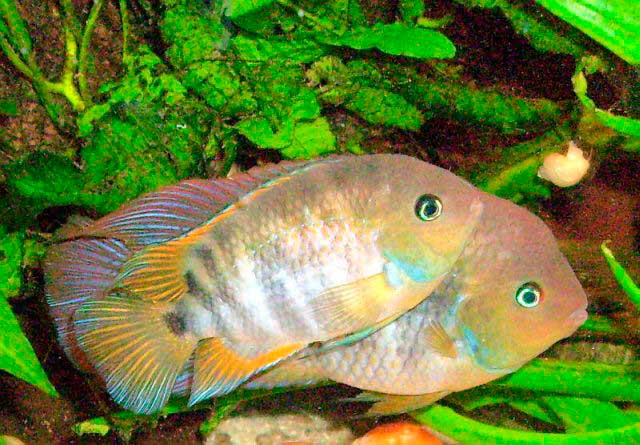
For the ground you can use coarse river sand, granite crumbs, small pebbles. Digs the soil much less than its closest relatives. Therefore, you can give free rein to your imagination, although you should take into account some features peculiar to all cichlids. At the bottom you need to create several shelters reminiscent of grottoes, caves, rocks built from large stones. The bottom can be decorated with several large snags.
Cichlasoma Sedgica and plants
Cichlasoma Sedgica doesn’t know that it is obligated to dig up plants, if you believe the clever books written about it. It doesn’t know… and it doesn’t do it. The dwelling for these fish you can decorate with any plants you want. You can give full play to your imagination and plant the backdrop, for example, pistolistnikom, the middle plan to decorate the cryptocoryne and in the foreground to arrange a lawn of Echinodorus delicate. Your efforts will not be ruthlessly destroyed.
Experienced cichlidniks have already had enough time to criticize me for the paragraph you just read. If you are interested you can run your eyes through the comments to the article. Well, they are quite right. Smart books do not always give the right information. As always the criterion of truth is practice, observation and experience. What is the use of the fact that the book compares the propensity of Sedgies to grountokopaniya with other cichlids. Perhaps it is somewhat less. Although, to me, not by much.
The average aquarist would compare a sejik not to a managa, but to a guppy or goldfish. And in such a comparison, of course, the propensity for digging up the soil in sejiks is simply monstrous.
Therefore, if you want to decorate your aquarium with green plants no matter what, the recommendations are as follows. Use plants that do not require rooting. If you still want to be sure to put in the aquarium with sedges rooting plants, they are better to plant them in pots. And the place of exit of the plant from the ground masked by large stones, which sedzha do not lift. Of course, the hole formed by boulders should be sufficient for free passage of plant tissues.
Water parameters
In the natural habitats of these fish, the environment has the following indicators: temperature from 22 to 26 degrees Celsius. Hardness of 8 to 20°dH. Hydrogen index from 6.8 to 7.8. Therefore, for aquarium water, it is desirable to adhere to the following values of these parameters. Temperature 24 – 26 degrees Celsius. Hardness 10 – 15°dH. pH 7 – 7.5.
Lighting
Most cichlids do not like too bright lighting. Cichlasoma sedgica is no exception. It is better to illuminate their underwater world with daylight fluorescent lamps LB with a total output of about 0.3 W/l.
Cichlasoma Sedgica aeration and water filtration
Cichlasoma sagica likes clean, clear, oxygen-rich water. Therefore, it is better to equip its home with a filter, compressor or a combination of them, setting up low-flow aeration. However, if the volume is sufficient, you can do without it.
Cichlasoma Sedgica Compatibility
Cichlasoma Sejika fish relatively peaceful, it gets along well with different neighbors, as close species, and with small fish of other families. Aggressiveness can show only during spawning. But this aggressiveness is not bloodthirsty. Rather, it can be compared to the noble stand of the cobra – to scare away and drive away does not mean to kill.
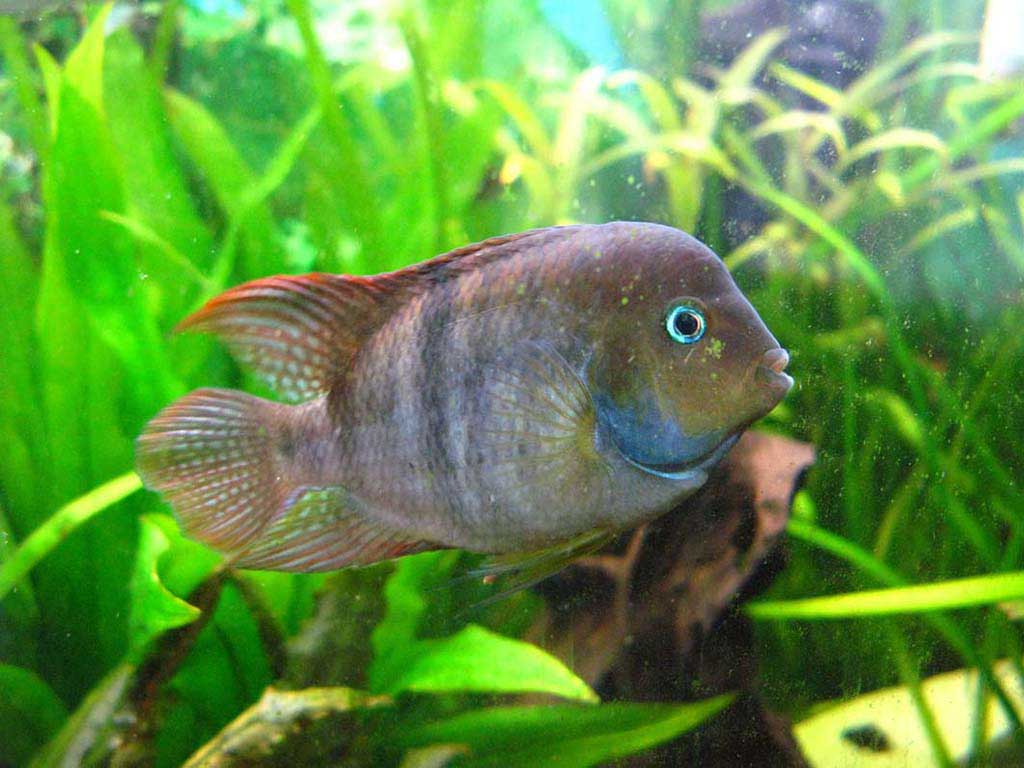
Ц. Sage-grouse are very brave in defense of their territory and especially their nest, but they will never chase an intruder into their territory if he has the intelligence to get away after one or two pokes. A big scuffle can happen only if after several warning lunges of the owners of the territory their uninvited guest will be so tactless that he will stay where he is not welcome. However, these scuffles, as a rule, end in peace with the final location of the conflicting parties in different corners of the aquarium.
Cichlasoma Sedgica Nutrition
Feed C. Sedgik should be fed both live feed and plant food. In order for their diet was complete it should be as diverse as possible, alternating moths, mealworms, tubeworms, enchitreus, crustaceans. The need for plant food can be satisfied by giving scalded with boiling water shredded leaves of lettuce, cabbage, dandelion, dried nettle, oat flakes, bread crumbs.
You should not overfeed your pets, and you should clean up any uneaten leftovers after each feeding.
Cichlasoma Sedgica Captive breeding
Cichlasoma Sedgica can spawn in a common aquarium. However, if you want to get a good brood and do not get nervous about the lost offspring is better to arrange for C. Sejika separate species aquarium or to spawn them in a specially prepared spawning aquarium. Sejika separate species aquarium or to spawn them in a specially prepared spawning aquarium. For it is suitable capacity of about fifty liters. Equip the spawning tank can be as well as the container for content, only grass can be planted smaller. And in some secluded corner, which the fish themselves have already had time to love, should be put on the side, not formerly in use pottery pot of suitable size.
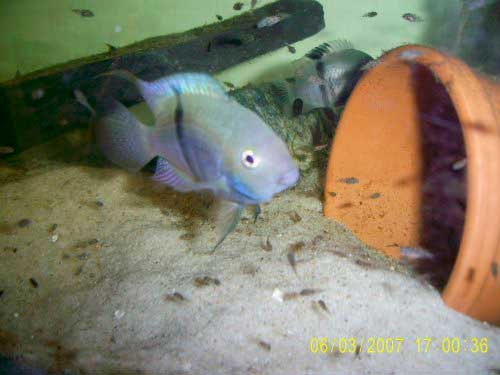
Spawning can be stimulated by gradual complete twofold change of water to fresh, tempered water. The replacement should be carried out gradually, over two weeks. It is also desirable to raise the temperature by two degrees. When all the conditions will seem heavenly to the fish, they will take up the arrangement of their ancestral estate. Clean it from the soil and excess grass.
After all the preparations will begin spawning as a result of which at the bottom of the properly prepared cave female will lay a hundred to five hundred eggs of pale yellow, almost gray color. About one millimeter in diameter. The male will fertilize these eggs. Incubation lasts about three days. And after another three to four days, the fry will swim. From this point, they should be fed 3 – 4 times a day small artemia or its nauplii. Remains of food should be carefully removed, despite the protests of adult fish. They jealously guard their offspring and are able to see aggression and in the siphon and in the sponge for wiping glasses.
When to wean the producers?
Ц. Sedgies nurse their offspring for a long time. However, after about two weeks, their parental instinct fades somewhat. Therefore, for the safety of most of the offspring fry is better to drain with a hose into a growing tank (about 30 liters). Parents should be left in the care of a dozen other of their babies. This will save the female from slaps, which can give her annoyed by the complete loss of offspring spouse.
Water for the growing aquarium should be taken from a common vessel and heated to the same temperature as in the spawning aquarium. As the fry grow, they should be transferred to larger food and provide them with a larger housing.
Cichlasoma sejica is an amazing fish in every way. If you want to get to know cichlids better, I strongly recommend you start with this species. Its peacefulness, tolerance to underwater flora, beautiful coloring, resistance to disease, relatively small size make in principle impossible those disappointments that can sometimes befall a novice amateur who decided to acquire cichlids.
